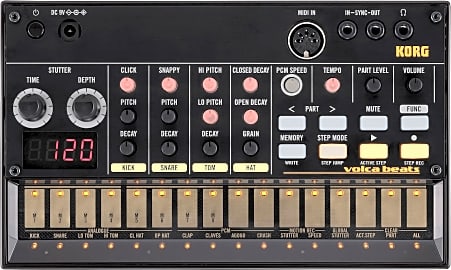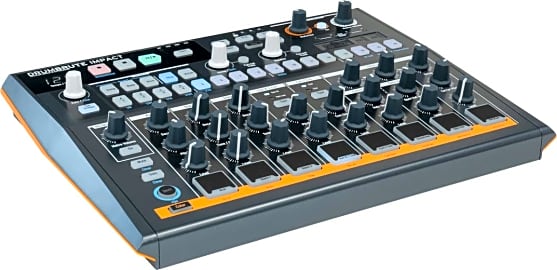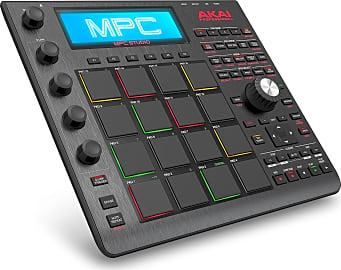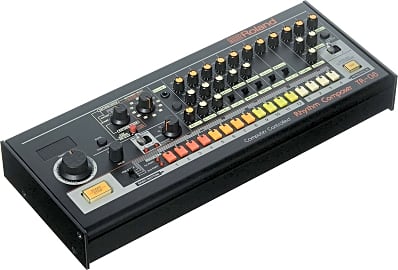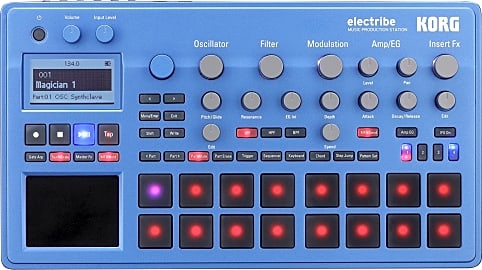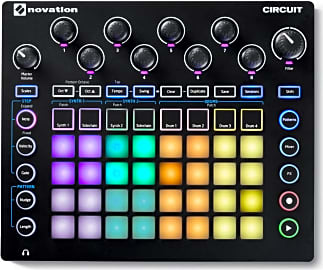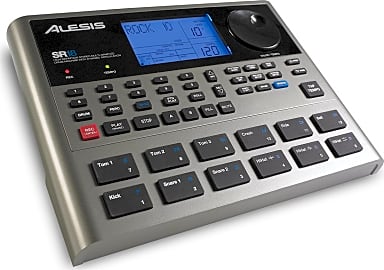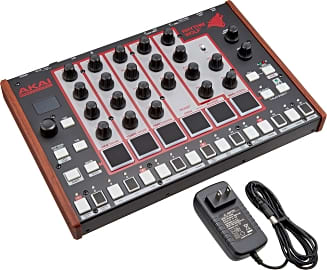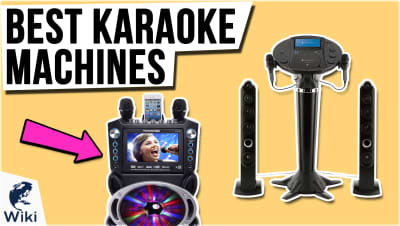The 10 Best Drum Machines

This wiki has been updated 39 times since it was first published in July of 2015. Whether you're a gigging DJ, an electronic musician, or you spend your days toiling away in your studio, a good drum machine will likely prove to be one of your most cherished pieces of hardware. The models we've included on our list range from the inexpensive and surprisingly articulate to a few nearly immaculate options with price tags to match their capabilities. When users buy our independently chosen editorial selections, we may earn commissions to help fund the Wiki.
Editor's Notes
June 17, 2019:
We added three new models to our list this time around: the Arturia SparkLE (#7), the Roland TR-08 (#5), and the Arturia Drumbrute Impact (#3). The TR-08 is much more than a nostalgic throwback model — it combines the best of old technologies with the advantages of newer ones.
If you plan on using a drum machine as an analog controller for your DAW, the SparkLE is a good choice — although its tendency to occasionally crash could spell disaster in a live setting. Best to keep it in the studio.
Aside from these additions, we scrapped the Boss Dr. Rhythm Dr-880. Some of the reasons it didn't make the cut are as follows: 1) programming sequences is simply too complicated and time consuming when compared to more modern designs; 2) its sound quality out of the box leaves a lot lacking for professionals; and 3) it's not particularly well-suited for live performers.
The other items on our list still span from entry-level to pro-grade. Our current #1 choice, the Dave Smith Tempest, is a polarizing model in terms of public opinion. It won't do classic 808 sounds well, but if you want to synthesize novel, textural drum sounds, the sky is the limit here; however, as is fitting, its price tag sits somewhere in the stratosphere.
Special Honors
Teenage Engineering PO-12 Marketed as a programable rhythm synthesizer, this one usually falls under the niche umbrella of pocket operators, rather than being grouped in with more traditional drum machines. It features a 16-step pattern sequencer, 16 sampled sounds, 16 different punch-in effects, and — lest you get tired of the number 16 — two tweakable parameter locks per sound. Despite its bare-bones appearance, it's quite an intricate machine, capable of versatile feats that'll thrill those willing to explore its nuances. With a design that resembles a small calculator more than a beat hub, it's incredibly portable, and cheap to boot. teenage.engineering
Roland TR-8S Featuring each and every sound from the highly-acclaimed 808, 606, 909, 707, and 727 kits, as well as many other preset samples, this model also features an SD card input for importing samples and backing up project files. It features multi-colored customizable faders, 8 analog inputs, a highly readable beats-per-minute tempo display, and a very flat profile that inclines it well towards comfortable live-performance use. It allows you to create and save up to 128 hybrid or layered kits, each with its own unique knob- and effect-settings. Roland's attention to detail shows in the production of this model. For example, you can add delay on a snare's rim shot, overdrive to kick drum, and customized filters to each individual drum or cymbal. All in all, this machine allows a level of customization that can blow the gates of your imagination wide open. Sure, learning the functions will take time and patience, and it's quite an investment, but potentially well worth it. roland.com
The Kit In The Machine
Each of these dilemmas find its solution waiting patiently in the drum machine.
Not everybody has the space or the neighbors that would allow them to own their dream drum kit. I once had a roommate who was determined to teach himself the drums, usually at all hours of the night. We didn't stay roommates for long. Your case might also be like his, that there is a deficiency in whatever internal human metronome allows a person to keep time. You could be beat-deaf the way some people are tone-deaf.
Each of these dilemmas find its solution waiting patiently in the drum machine. No space for a kit? The drum machine is probably smaller than your computer. Roommates or neighbors with ears? You can plug in some headphones. Got no sense of rhythm? A drum machine will quantize even your live input to keep it in time with a selected beats per minute (BPM).
My biggest concern with drum machines has always been with the inhuman element, that sound of a computer doing the drumming. You could say that the computer simply drums too well, with too much consistency and uniformity from hit to hit. Fortunately, the best among our recommended drum machines can reduce their own perfection, quantize a little more loosely, and even alter the intensity and placement of hits by degrees of common human error.
This kind of humanization effort in computer-based musical performance comes along with an increase in memory and in the nuanced sensitivity of a drum machine's pads. You can assign a specific drum sound–either pre-programmed, tweaked, or built from scratch via waveform–to each of these pads, all of which are pressure-sensitive. The harder you hit the pad, the harder your computer drummer hits the drum intended.
Once you know what beat you want, you can sequence the pattern up to a given number of steps, layer patterns on top of one another, and even sequence the sequences to provide you with a whole song's worth of back beats, breakdowns, and fills.
Bang The Drum Machine Slowly
The next time you get a chance, walk into the drum section of your local music store. If it's busy, you'll see a few drummers painstakingly tapping on a dozen different snares, getting the feel for sets far too big for their needs, and drooling over kits they can't afford. It's a strange scene, but that level of curiosity and specificity is vital to finding a drum set with which you can commune, and it's not a bad idea to approach picking a drum machine in a similar fashion.
More advanced beat designers should look into machines that simply have more pads to them, as you can assign more sounds to layer a complex and original experience.
It helps first to know your skill level. If you don't have the most dexterity or limb independence, you want to make sure you get a drum machine that can patiently layer your sequences one piece at a time and do so in a way that won't drive you crazy. For example, a drum machine that can modulate the BPM of a sequence after you lay it down at a slower, more manageable speed would suit you nicely.
More advanced beat designers should look into machines that simply have more pads to them, as you can assign more sounds to layer a complex and original experience.
The other important distinction between drum machines is whether to go analogue or digital. A modern digital drum machine may have plenty of analogue drum samples, but their flexibility as you tweak them is limited by the quality of digital electronics. Analogue drum machines, on the other hand, take an analogue sample and push and pull it in ways that sound much more organic and natural than their digital cousins would.
The downside to analogue, however, is that it's usually a lot more expensive. You're also liable to spend a lot of time fussing with the drum sounds on an analogue machine, only to filter it through a dozen digital interfaces before the track itself is complete.
Two Beats Forward, One Beat Back
Unlike a great many musical inventions that seem to maintain a forward trajectory from their introduction on through the long process of development and refinement, the drum machine came into being with far more advanced capabilities than its descendants would touch for years.
The result is a wide variety of drum machines, the best of which lie here before you.
That machine, D-Rail's Rhythmicon, allowed users in the early 1930s to create complex and layered drum patterns on a device about the size of a copy machine. Despite interest in the unit from the music industry, the Rhythmicon faded away, and it would be another twenty years before the drum machine took hold.
That later generation of machines only allowed users to make minor adjustments to pre-selected beats. It took until the early 70s for programmable drum machines to come along, and they operated on simple patterning interfaces and punch card inputs.
Most famous among drum machines, Roland's TR-808 and 909 drum machines, showed up in the 80s and changed the face of modern dance music and hip hop as we know it. The 808's predecessor, Linn's LM-1 doesn't get a lot of credit here, but any major pop album recorded in the few years before the 808 was available is covered in samples from the LM-1.
Today, the excitement of those drum machine innovations has largely died down, and the sense of forward digital progress has been replaced by a desire to reintegrate analogue components into the digital experience. The result is a wide variety of drum machines, the best of which lie here before you.


